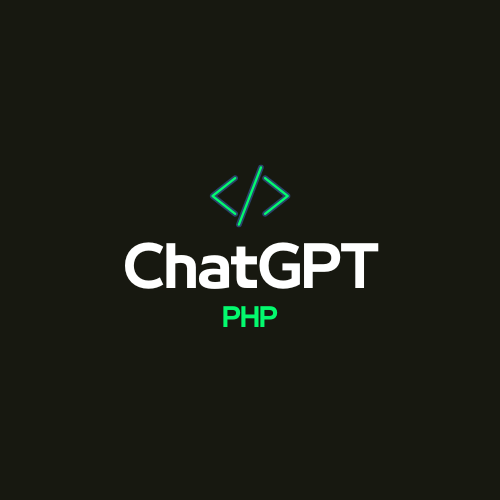Easy Way To Use PHP and ChatGPT 4.0

To use ChatGPT-4.0 with PHP, you can make HTTP requests to the OpenAI API to interact with the model. Here’s an example of how you can integrate ChatGPT-4.0 into a PHP application:
Step 1: Sign up for the OpenAI API:
If you haven’t done so already, sign up for the OpenAI API and obtain an API key. This key will be used to authenticate your requests to the API.
Step 2: Set up your PHP project
Create a new directory for your PHP project and navigate to it in your terminal. Create a new PHP file, for example, chat.php, where you’ll write your code.
Step 3: Make HTTP requests using cURL
PHP provides the curl library for making HTTP requests. We’ll use cURL to interact with the OpenAI API. Ensure that the cURL extension is enabled in your PHP configuration.
Step 4: Prepare the request
To interact with the ChatGPT-4.0 model, you’ll need to send a prompt and receive a response. Start by creating a PHP array to hold the data you’ll send to the API. For example:
<?php
$api_key = 'YOUR_API_KEY';
$model = 'gpt-4.0';
// Prepare the data
$data = array(
'prompt' => 'Hello, GPT-4.0!',
'max_tokens' => 50, // Maximum number of tokens in the response
);Here, we’ve set the prompt to ‘Hello, GPT-4.0!’ and specified the maximum number of tokens in the response as 50. You can modify these values as needed.
Step 5: Convert data to JSON
Before sending the request, convert the data array to JSON format using json_encode():
// Convert data to JSON
$json_data = json_encode($data);
Step 6: Set up the cURL request
Now, set up the cURL request by initializing a cURL session, setting the appropriate options, and specifying the API URL and headers:
// Set up the cURL request
$ch = curl_init();
curl_setopt($ch, CURLOPT_URL, 'https://api.openai.com/v1/engines/' . $model . '/completions');
curl_setopt($ch, CURLOPT_RETURNTRANSFER, true);
curl_setopt($ch, CURLOPT_POST, true);
curl_setopt($ch, CURLOPT_POSTFIELDS, $json_data);
curl_setopt($ch, CURLOPT_HTTPHEADER, array(
'Content-Type: application/json',
'Authorization: Bearer ' . $api_key,
));Ensure that you replace 'YOUR_API_KEY' with your actual API key obtained from OpenAI.
Step 7: Send the request and handle the response
Send the cURL request and handle the response:
// Send the request
$response = curl_exec($ch);
// Check for errors
if (curl_errno($ch)) {
echo 'Error: ' . curl_error($ch);
} else {
// Parse the response
$data = json_decode($response, true);
echo 'ChatGPT-4.0: ' . $data['choices'][0]['text'];
}
Here, we’re checking if there are any cURL errors and then parsing the response. We’re extracting the generated text from the response and displaying it as the output.
Step 8: Close the cURL session
After you’ve processed the response, close the cURL session to free up resources:
// Close cURL resource
curl_close($ch);
Step 9: Run the script
Save the chat.php file and run it from the command line or access it through a web server. You should see the response generated by ChatGPT-4.0 printed on the screen.
That’s it! You’ve successfully integrated ChatGPT-4.0 with PHP. You can expand on this basic example to handle user input, maintain conversation history, and have dynamic back-and-forth interactions with the model.

